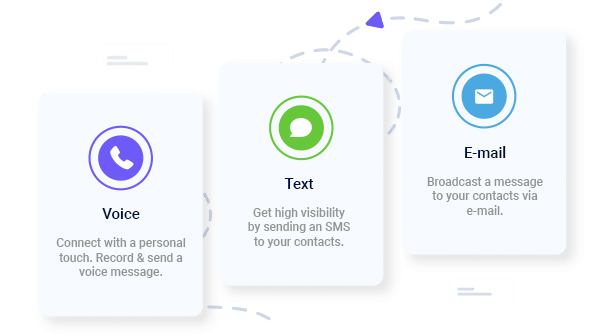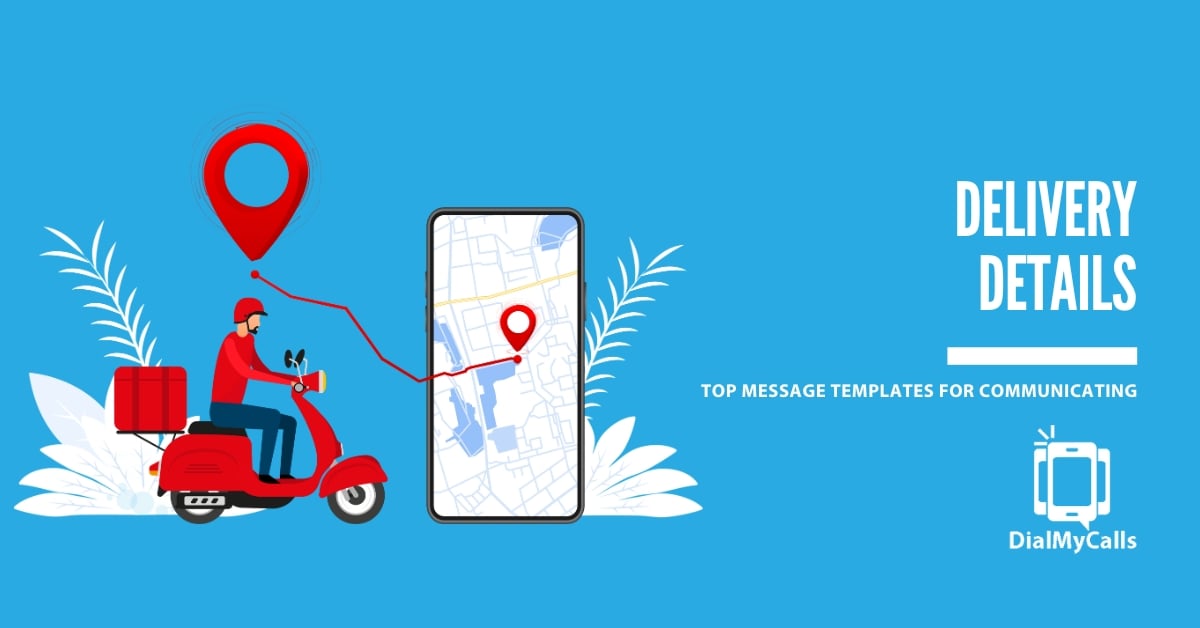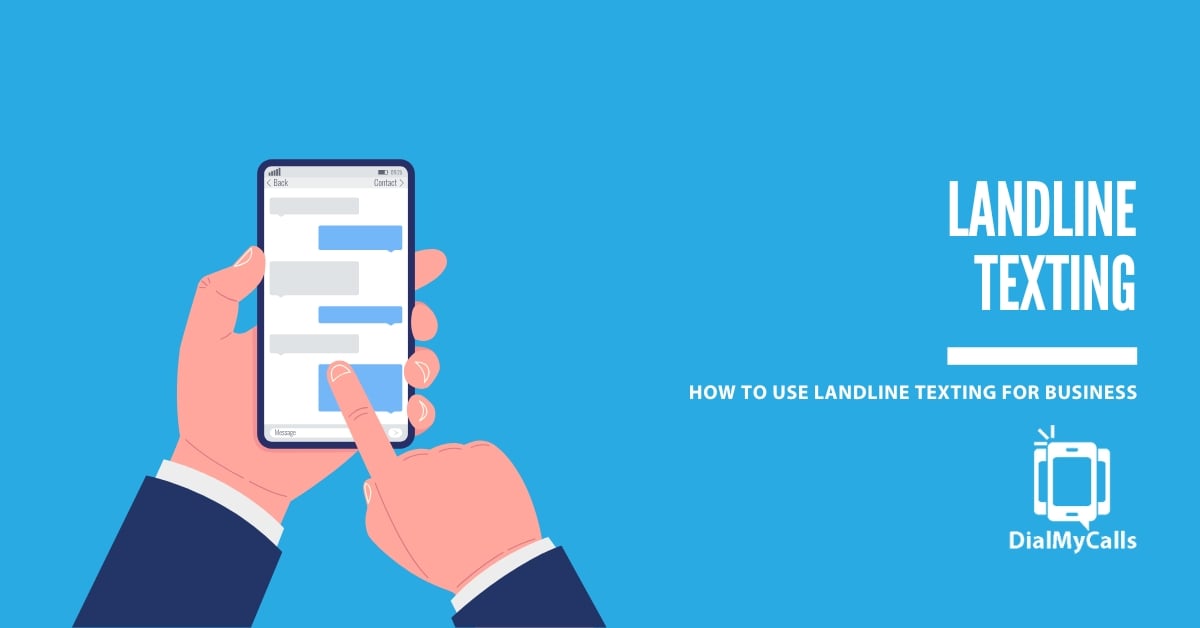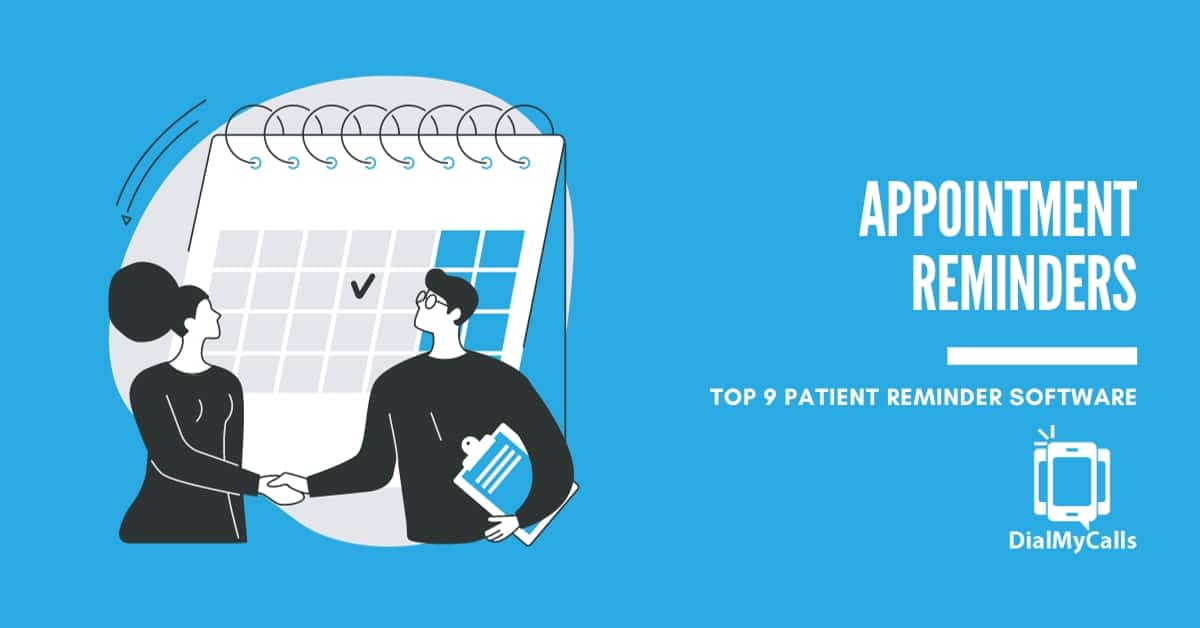Author
Tim Smith is the Media Manager at DialMyCalls, where he has leveraged his expertise in telecommunications, SaaS, SEO optimization, technical writing, and mass communication systems since 2011. Tim is a seasoned professional with over 12 years at DialMyCalls and 15+ years of online writing experience.
Try Using DialMyCalls Right Now
Start For FreeRecent Posts
- SMS Marketing Metrics: How to Measure and Improve Your Text Campaign’s Success
- What are SMS Carrier Fees and How to Lower Your Costs
- 8 Creative SMS Marketing Ideas to Boost Engagement This Summer
- 15 Ways to Use QR Codes For Event Promotion & Attendee Engagement
- Top 6 Automated Calling Service Providers For Your Business
Categories
“I am a youth minister and have spent hours in the past calling students individually to remind them of an upcoming event or to get out an urgent announcement. With DialMyCalls.com, I cut that time down to about 1 minute. I also love how I can see exactly who answered live and how long they listened so I know if they heard the whole message. DialMyCalls.com is the best website I have stumbled upon all year! Thanks!”
Central Baptist Church
Try Using DialMyCalls Right Now
Start For FreeEffective Communication Tips for Utility Companies During Power Outages
Posted by Tim Smith in Customer Reminders on December 2, 2024

Power outages can feel like chaos, but for utility companies, they’re a crucial moment where they can either build trust or lose it.
Whether it’s a tree falling on a power line or a major storm knocking out power for days, outages happen. And while we can’t predict every issue, we can control how we communicate during these events.
In this blog, I’ll walk you through the art of keeping your customers informed, calm, and feeling taken care of every step of the way with DialMyCalls. So, let’s take a look at the top 5 ways you can handle a power outage situation like a pro.
1. Proactive Communication Before Major Storms and Events
- Prepare Customers for Possible Outages with Proactive Alerts
- Provide Safety Tips and Preparation Guidelines
- Use Predictive Data to Estimate Impact
Prepare Customers for Possible Outages with Proactive Alerts
The best time to communicate is before the storm hits. Pre-outage alerts let customers know what to expect, and a little heads-up can make all the difference in how they handle the situation.
For instance, a simple and clear text message like, “High winds and storms expected in *your area* in the next hour which may result in power outages.” shows that you’re looking out for your customers.
There are many ways you could choose to contact customers before a storm. Automated phone calls and text alerts are popular, as are email notifications. You can also use DialMyCalls to deliver SMS text messages, phone calls, and email alerts to your customers.
Provide Safety Tips and Preparation Guidelines
Along with your alert, why not send a few safety tips?
Simple reminders like “Charge your devices fully,” “Gather flashlights and batteries,” or “Keep an emergency kit ready” can be lifesavers.
DialMyCalls allows you to send personalized voice broadcasts with these tips, which doesn’t just inform customers—it reassures them that you’re prepared and looking out for them.
Use Predictive Data to Estimate Impact
When a storm is brewing, it’s useful to look at weather patterns and predict where it’ll hit hardest. Armed with that information, you can send targeted messages to those most likely to be affected.
DialMyCalls lets you tailor your messaging based on contact groups, making it easier to inform customers location-wise about what they might expect. The more specific you are, the more your customers will appreciate it.
Keep Everyone Connected & Informed
Get the Word Out Quickly with Bulk Texting and Voice Calls
2. Keep Customers Updated During the Outage
- Regularly Update to Ease Customer Anxiety
- Provide Realistic Power Restoration Timelines
- Highlight Actions Being Taken
- Share Updates Across Multiple Channels
Regularly Update to Ease Customer Anxiety
During an outage, customers often feel disconnected and anxious about when power will be restored. Frequent updates, even if there isn’t major progress to report, can make a huge difference in customer experience.
I recommend setting up a cadence of messages, like hourly or bi-hourly updates, using DialMyCalls’ automated bulk texting feature. Even a message as simple as, “We’re aware of the outage and are working on it; more updates soon,” can provide much-needed reassurance. But make sure that you provide them with an opt-out option to be compliant.
Provide Realistic Power Restoration Timelines
Honesty is key when it comes to power restoration. So, don’t promise a timeline that you might not be able to meet. Instead, give yourself some breathing room. If you tell customers that it’ll take 36 hours to restore power, but you do it in 24, they’ll be pleasantly surprised and even appreciate it. A good rule of thumb therefore is to under-promise and over-deliver when it comes to timelines.
Consistency is also vital here—ensure all updates across platforms (SMS, social media, website notifications) reflect the same restoration timeline to avoid any confusions.
Highlight Actions Being Taken
Customers want to know what’s happening behind the scenes. Messages that outline steps like “Crews have been dispatched” or “Repairs are underway in your area” show that your team is on the ground and focused on resolving the issue.
So, make sure to send quick status updates about what’s being done. This will reinforce your commitment to service and the safety of your customers.
Share Updates Across Multiple Channels
Don’t just stick to one method—cover all your bases. DialMyCalls allows you to reach customers through automated calls, SMS, and even social media integrations. You can use social media outlets like Twitter, Facebook, and Instagram to announce outages and the expected recovery times. Additionally, you can also send press releases to local news, radio, and television outlets.
However, make sure that each update includes clear, actionable information to ensure customers have everything they need, regardless of the channel they use.
3. Offer Customization Options for Notifications
- Allow Customers to Select Notification Preferences
- Offer Language and Accessibility Options
- Send Personalized Notifications When Possible
Allow Customers to Select Notification Preferences
Every customer’s needs are different. Some prefer regular updates, while others just need major alerts. DialMyCalls allows you to customize message preferences, letting customers choose how often and via which method they’d like to receive updates.
This reduces message fatigue and makes sure you’re sending the right content to the right person.
Offer Language and Accessibility Options
At DialMyCalls, inclusivity is our priority.
For customers who may need notifications in languages other than English, we offer multilingual text messaging and customizable message formats so that you can communicate effectively with all customers, regardless of what language they speak or their accessibility needs.
Send Personalized Notifications When Possible
Some customers, like those using medical devices reliant on power, may need extra assistance or faster updates. With DialMyCalls’ group messaging features, you can create dedicated groups for at-risk customers to ensure they receive priority communication.
This feature is critical for reaching those most impacted, and it demonstrates a level of care that builds customer trust.
4. Engage Customer Service Teams for Personalized Support
- Train Customer Service Reps to Handle High-Stress Situations
- Use IVR Systems to Manage High Call Volumes
- Create a FAQ or Status Page for Self-Help
Train Customer Service Reps to Handle High-Stress Situations
Outages can be high-stress situations, and your customer service team should be prepared to handle calls with empathy and patience.
Training reps in crisis communication techniques, such as active listening and validation, can make a big difference. By acknowledging frustrations and providing clear information, reps can turn potentially negative interactions into positive experiences.
Use IVR Systems to Manage High Call Volumes
Interactive Voice Response (IVR) systems can help handle the high volumes of calls during an outage. This allows customers to hear essential updates and timelines before reaching an agent.
By directing customers to specific outage-related information, IVR reduces wait times and gives your team space to address more urgent issues.
Create a FAQ or Status Page for Self-Help
Consider building a dedicated outage page on your website with real-time updates, outage maps, and FAQs for customers looking for more details.
DialMyCalls makes it easy to include links to these resources in MMS text alerts, helping customers to find answers on their own while alleviating the burden on your customer service team.
5. Post-Outage Communication and Follow-Up
- Send Restoration Confirmation Notifications
- Showcase Gratitude and Provide a Recap
- Gather Customer Feedback for Continuous Improvement
Send Restoration Confirmation Notifications
When the power is finally restored, send out a confirmation. A quick message such as, “Power has been restored in your area. Thank you for your patience!” closes the communication loop and reassures customers that all is back to normal.
If some customers are still having issues, this is also the perfect moment to ask them to report ongoing problems with DialMyCalls’ two-way messaging system.
Showcase Gratitude and Provide a Recap
A few days after the storm has passed, send a follow-up message recapping the cause of the outage, the restoration process, and any improvements you’re making.
This recap, along with a message of thanks, goes a long way toward showing transparency and building a positive relationship with your customers. DialMyCalls makes it easy to send follow-ups that reinforce a sense of community and gratitude.
Gather Customer Feedback for Continuous Improvement
Lastly, ask for feedback on your outage communication. With DialMyCalls’ two-way messaging, you can easily gather customer insights, helping you refine your communication for future outages.
Asking for feedback not only shows customers that you care but also strengthens your relationship with them.
Final Thoughts
Power outages are never convenient, but with the right communication strategy, you can turn an inconvenient situation into an opportunity to strengthen customer trust.
DialMyCalls offers everything you need to send timely, personalized updates that reassure your customers, reduce anxiety, and build loyalty. By keeping customers in the loop and showing them that you care, you can transform outage communication into a service they truly appreciate.
Stay Connected with Mass Notifications
Create & Send a Broadcast to Thousands in Seconds



